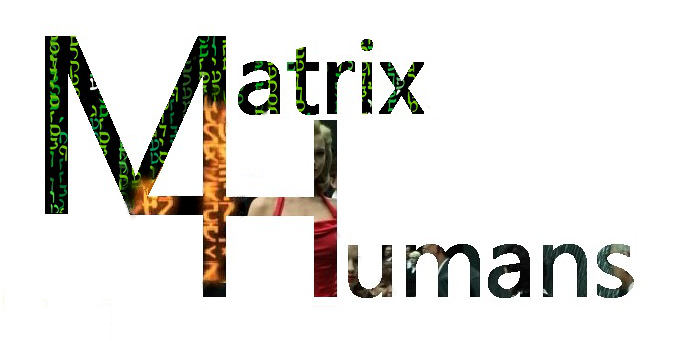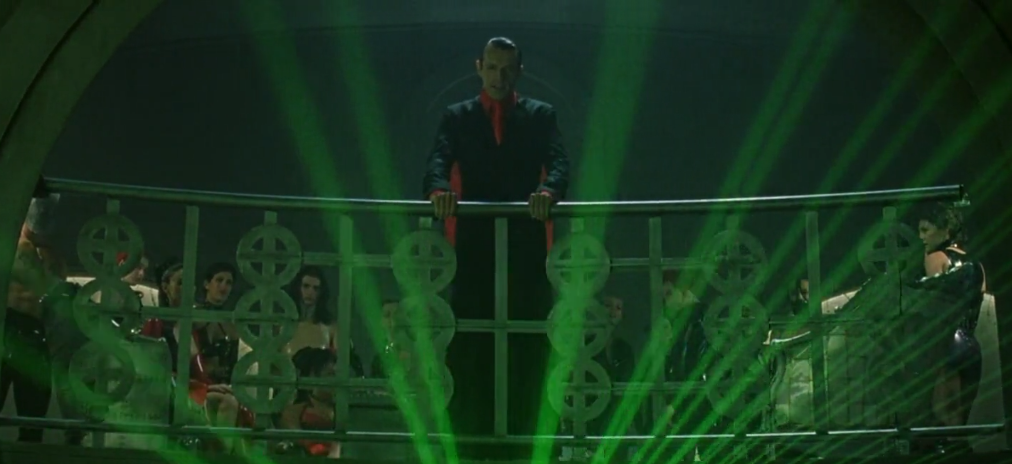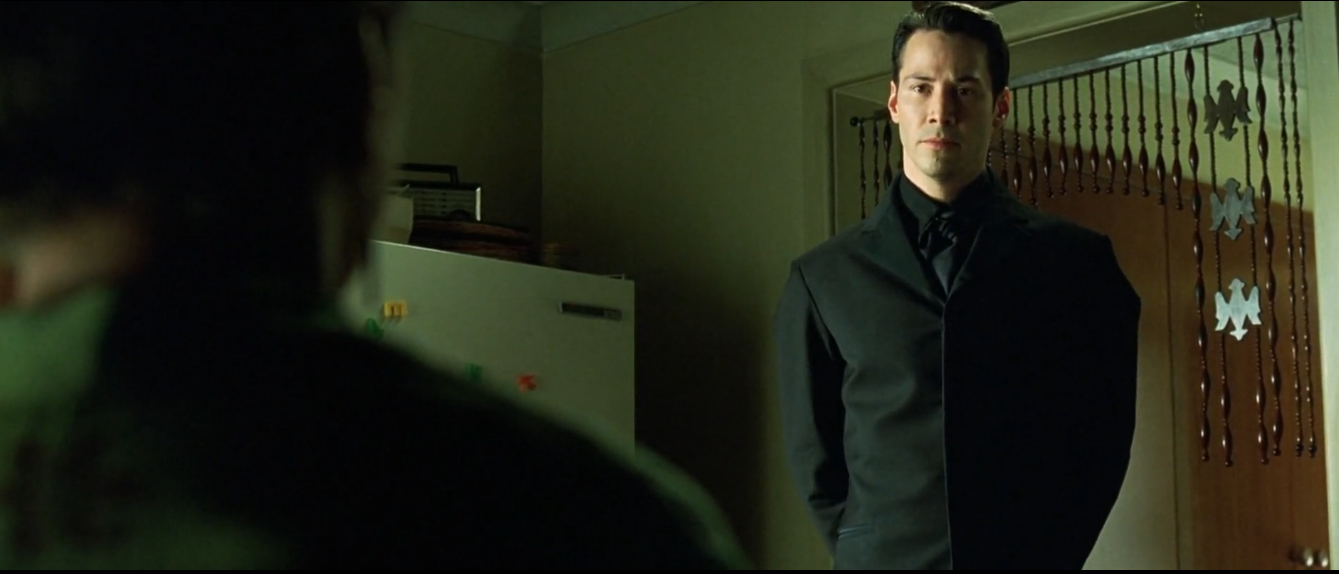The Daughter: Big Things Come In Small Packages
Kabbalistic texts hold hints to the concept of the “divine daughter” and what we may expect to see in The Matrix Resurrections:
Wisdom was given to Solomon through the “daughter” … through whom all is revealed.
The Bahir (Aryeh Kaplan commentary)
That is the essence of the Shekinah, which is the essence of the last level of wisdom; the essence of the name Adonay. For this Name … is the essence of the perfect unity.
Sha’are Orah (5th Gate) Yosef Gikatilla
Special help from Heaven is given when gathering in the exiles at the beginning of the Redemption.
Kol Hator, chapter 3
The Daughter Persona of the Shekinah
In our previous article on the Merovingian relating to the figure of the ‘serpent,’ we discussed how the elements of the Sitra Achra (the “opposing side”) are known by various names including; dragon, serpent, satan, as well as certain angelic entities. Each term relates to the context and function.
The same idea applies to other concepts, including that of the “divine presence,” called the ‘Shekinah.’ Though almost always conveyed in a feminine manner, the Shekinah is presented in a number of different ways. (1)
As we can see from these texts, there is a close connection between the ‘upper’ aspect (the Oracle) and various ones ‘below’:
For the Shekinah is both here below and on high. … the upper Shekinah and the lower Shekinah are intertwined, and both operate together and simultaneously.
Zohar 1:159b
The Shekinah is sometimes called Daughter, and sometimes Sister, and here She is called Mother. And She is indeed all these. He who penetrates into this mystery has imbibed precious wisdom.
Zohar 2:100b
Though the Shekinah is most often associated with the lowest world of concealment that we live in, as the “divine presence,” it finds expression in each of the worlds of existence, according to the parameters of that world.
The Shekinah is called “bride” as well, as we have discussed through this Knowledge Base, including our profile on Trinity. (2)
Regarding this feminine persona through the first three films:
- We saw the ‘mother’ aspect in the Oracle
- Trinity was in the role of ‘bride’ to Neo
What about the daughter? Was this revealed in the Matrix trilogy?
Indeed, one ‘minor’ character presented it in the story.
Rama Kandra: This is my wife Kamala, my daughter Sati.
Sati, being a program, emanates from the world between that of the Oracle and Trinity – the world of angels/messengers.
The Shekinah is also called by the generic name of ‘angel’ in some places. The explanation below is important, as it aligns with Sati in our Matrix story:
Angel is here one of the names of the Shekinah, applied to her when she is a messenger from on high and receives radiance from the supernal mirror, for then she is blessed by the Father and Mother, who say to her: Daughter, go, mind thy house, attend to thy house; go and feed them, go to the lower world where thy household wait for sustenance from thee; here is all which they require … She is, however, called angel when she is sent by the Father and Mother … When she first appeared to Moses she was called angel, but to Jacob she appeared only under the figure of Rachel.
Zohar 3:187a
Regarding the above:
- Angel is a being from the angelic world (“on high”) which is the program world in The Matrix
- “Father and Mother” here are Rama Kandra and Kamala, the parents of Sati (3)
- The phrases, “Attend thy house” and “lower world,” both allude to the Matrix world
- Those in the lower world/Matrix receive some sort of ‘sustenance’ from the program world through her
- The Shekinah did not appear to Jacob (Neo) as angel/daughter, but in the form of Rachel (Trinity)
The Daughter Is In The House
As discussed in our article on the sefirot, the profile on Trinity, and the article on the feminine aspect of the Matrix, the lowest of the ten emanations, Malkhut (Kingdom) directly relates to our ‘physical’ reality. This includes everything that can be observed with a telescope or a microscope, what we experience with our senses, as well as human emotion and intellect.
The concept of Shekinah, as the “daughter” has a specific relationship to Malkhut, in kabbalah. Going back to our previous discussions on the sefirot and spiritual personae, we have this structure:
- Chokhmah/Wisdom = Father/The Architect
- Binah/Understanding = Mother/The Oracle
- “The Six” = Groom/Son/Neo (the 6 emanations between Binah and Malkhut)
- Malkhut = Bride/Trinity or Daughter/Sati
As you can see, the two personae that are “furthest apart” are father and daughter. Kabbalah teaches that at this time (in our reality) they are separated. The Shekinah/daughter is said to be in exile in our world of concealment – somewhat cut off from the spiritual worlds above. (Recall that Sati is called “the last exile.“)
As long as this structure is in this ‘fractured’ state, humankind will remain separated from its Source as well.
Neo, as the son/groom, made the connection between the two feminine personas. (The mother and bride aspects of the Shekinah, in the forms of the Oracle and Trinity) This was the initial stage of the Matrix prophecy – which is the first (and necessary) part of the redemption process.
The “path” of the One (the ‘son’) may have ended with the Source, but the work of the daughter, continues in the Matrix (Malkhut) with the people in The Matrix Resurrections.
Here is a key concept:
The daughter, Sati, was separated from the ‘father’ (Rama Kandra) and sent into exile in Malkhut for this purpose.
Sati will serve to bring the entire system of the sefirot to their fulfillment and conclusion. (i.e., the end of the Matrix and freedom for the people.) When the daughter is ‘reunited’ to the structure there will be a completed structure. Subsequent to that, the structure itself (the Worlds of Existence, the Sefirot – the Matrix) will no longer be required. Everything will return to a perfect singularity.
Ironically, the words of the Architect ring true, albeit in a manner he may not have intended:
Which brings us at last to the moment of truth, wherein the fundamental flaw is ultimately expressed, and the anomaly revealed as both beginning and end.
Shekinah and the People
As the Shekinah has a close association to Malkhut and all that is found within it, there is a direct connection between this divine presence and our very selves.
In fact, the word Shechinah relates to both, shachen, which is a ‘neighbor,’ and to shochen, meaning “to dwell within.” Thus, this divine presence is said to be both ‘with’ the people and ‘within’ each person.
It would seem that with this connection, humans could easily find their way out of the Matrix. But there are other forces at play, barriers that work to deceive them – these also being external and internal.
Morpheus told Neo early on that the Matrix was, “the world that has been pulled over your eyes, to blind you from the truth.” In kabbalah that which functions in this capacity are called “klippot” (singular: klippah). This term translates to the idea of a ‘shell’ or ‘covering.’ Klippot can be anything physical, emotional, intellectual, or spiritual.
As we mentioned in earlier articles, there must be an “arousal from below” from a greater part of humanity before the Matrix prophecy is fulfilled. This would relate to the ‘sustenance,’ that Sati will provide, mentioned in the Zohar 3:187a verse above. The divine presence is available to help us, but we have action to take, individually and collectively.
As Neo said, the problem is choice:
“The Shechinah does not gather them except as a result of the actions of those below … the job is left for us to do. Every spark is precious and must be raised out of the klippot. And each one must be elevated through our using free choice to do good. Until we finish our awakening from below, the sparks cannot be fixed, and Mashiach (the Messiah) as it were, cannot come.”
“Divine Presence in Exile,” Shabtai Teicher
As we have mentioned, the hidden purpose of the Matrix is to give humanity a chance to effect repair upon itself. This repair is called ‘tikkun’ (see text below).
Kabbalah teaches that a direct connection to the Source of divine energy would actually annihilate us. (Like plugging your cell phone directly into the local power plant.) Neo barely survived his encounter, and this was only after he had proved himself through total selflessness to be worthy – something no other human was able to.
Though Neo made a critical connection to the Source, from where a degree of light/energy entered the Matrix, the work to bring the end of the Matrix, has to involve the humans inside the Matrix world itself. As mentioned at the very top of this article, this will include “divine help.”
This comes in the form of the daughter/Shekinah, Sati, who willingly entered the world of concealment – under the guise of “protecting her from deletion.”
These concepts are all reflected in the text below. The comments underneath relate to each of the four paragraphs:
“Where is the lowest of worlds? You’re in it. This is the world of total otherness, a world where there dwell creatures that have no sense of anything else other than this world. Some even sense that they themselves are the masters of this world, or even that nothing else exists other than themselves. It is a material world: Things couldn’t get more discretely tangible, more self-absorbed, more otherly, than they are down here.
Which is why the Shechinah descends within this world: to seek out those most precious sparks, to rescue them from their shells of darkness, to reconnect them to their Source above so that they become once again meaningful and divine—all through us, Her agents, so that this world and this life of ours plays out as not just another zero-sum game, but as an investment with incomparable returns.
In that search, Her destiny becomes wrapped up in theirs, wrapped up in darkness and in confusion. So much so that She cannot redeem those sparks without redeeming Herself. And in that struggle, as we will see, She redeems not only the sparks, but the darkness itself…
This world cannot be healed and transformed except by those who dwell within it. Allow the Infinite Light to shine into our world unshielded, and there is no world—it would vanish as a shadow before a bright light. Tikkun means keeping the world standing while repairing from within—as one might renovate a home without disturbing its inhabitants. The ultimate tikkun is a harmony of a world that can contain Infinite Light and yet remain a world. To do that requires something that is of the world and yet beyond it. It requires a captive. And so the Shechinah, and our souls that are sparks of the Shechinah, place themselves in voluntary captivity so they can do the job from inside.”
“Exile of the Shechinah and Descent of the Soul,” Tzvi Freeman
Explanation of the above:
- The above description of our world of concealment and materialism mirrors the description of the Matrix that Morpheus gave to Neo in the first movie.
- The reference to “zero-sum game,” is a description of the Architect who simply “balanced the equation” (Oracle) expecting Neo to make the same choice as his predecessors. Neo’s path, along with those humans who also seek the truth, is the “investment” made, that will result in the fulfillment of the prophecy in The Matrix Resurrections and an even better life for everyone than what preceded the Matrix.
- As mentioned, the Shekinah is both a ‘neighbor’ and ‘within.’ This inexorably ties it to the Matrix itself – the ‘darkness’ hiding the truth from the humans. It too will be ‘redeemed’ at the end, as it will be shown to have served an ultimately ‘good’ purpose.
- This is the reasoning behind the phrase, “Be in the world but not of it.” We have a job that can only be completed ‘here,’ though ‘here’ is not our true reality.
That fourth idea is the “big secret.” The ultimate goal of the plan, originating in love from the loftiest spiritual level of Keter, is only fulfilled in Malkhut, the physical world, by us “getting involved.”
As the mother told the daughter:
Oracle: That’s it. That’s the secret. You’ve got to use your hands.
NOTES:
- Also, see our article on similar mother-daughter aspects in Hinduism.
- The Biblical text, “Song of Songs” (also called “Song of Solomon) is tricky to understand in places, as the male character refers to the female one as both wife and sister. This is resolved when understanding the kabbalistic metaphors surrounding the Shekinah as explained in this article.
- Just as the Architect are “father and mother” of the Matrix, and as Morpheus was a ‘father’ to the freed humans in the Matrix world (as Tank said). The programs Rama Kandra and Kamala are a similar “father and mother” image in their world.



